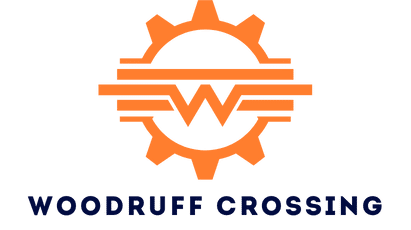How to Evaluate the Impact of Transportation Infrastructure on Residential Property Values?

Transportation infrastructure can significantly influence residential property values. The proximity and quality of these infrastructures, such as bus stations and frequency of public transit, can either increase or decrease the value of a property. Today, let’s dive deeper into the intricate relationship between transportation and real estate values, and learn how to evaluate their interplay.
The Relevance of Transportation to Property Values
The location of your property, particularly in relation to transportation infrastructure, plays a vital role in determining its value. Imagine owning a house that’s a stone’s throw away from a bus station, or perhaps a condo unit that enjoys easy access to a network of public transits. This convenience can heavily impact the desirability of the property, and therefore, its value.
Also to discover : What Are the Financial Pros and Cons of Investing in Off-Plan Property Developments?
Residents typically prefer to live in cities with well-developed transportation systems. The frequency of available transport, the proximity to bus or train stations, and the efficiency of the transit system all contribute to this preference. These factors significantly decrease commuting time, making the property more appealing and thereby driving up its value.
Impact of Public Transit on Property Values
Public transit systems can significantly influence property values. For urban residents, ease of access to public transportation is a top priority when selecting a home. A property located close to transit stations is generally more expensive than properties situated further away.
Also read : What Approaches to Urban Design Can Reduce the Heat Island Effect in UK Cities?
Public transit can also have an impact on a city’s land costs. The frequency of public transit services and the number of transit stations can substantially raise land prices. Areas close to transit stations are often in high demand, leading to a surge in property prices.
Furthermore, a new transportation project can create a ripple effect on adjacent properties. When a new bus station is being established, properties around the area may experience an increase in value due to improved accessibility. However, the same projects can also lead to an increase in noise and congestion, which can conversely impact property values negatively.
Urban Developments and Residential Property Values
Urban developments, particularly transportation infrastructure projects, can have a profound impact on residential property values. For example, the development of a new subway line in a city can substantially increase the value of properties located near the stations.
Additionally, the comprehensive development of a city’s transportation system can make it more attractive to potential residents. This includes the expansion of bus lines, the improvement of road conditions, and the enhancement of public transit frequency. All of these developments can significantly boost property values in the area.
It’s also worth noting that some residents might be willing to pay more for properties that offer a lower cost of transportation. For instance, if a property is located in a city where public transit is affordable and efficient, the overall transportation costs for the resident can be reduced.
Evaluating the Impact of Transportation Infrastructure
Now that we’ve established how transportation infrastructure can affect property values, it’s time to discuss how you can evaluate this impact. The first step is to understand your residents’ transportation needs and preferences. Surveys or interviews can be an effective way to gather this information.
Next, consider the location of your property. Is it close to bus or train stations? What’s the frequency of public transportation services in the area? Take note that properties located near transportation hubs typically have higher values.
You should also consider future plans for transportation infrastructure in your city. Are there any upcoming projects that could affect your property values? Monitoring urban developments and staying informed about city plans can help you anticipate changes in your property’s value.
Finally, don’t overlook the negative impacts of transportation infrastructure. While proximity to transit hubs can increase property values, it can also lead to increased noise and congestion. Be sure to weigh these factors when evaluating the impact of transportation infrastructure on your property’s value.
Balancing the Benefits and Drawbacks
While transportation infrastructure can significantly enhance property values, it’s crucial to balance the benefits with potential drawbacks. Increased accessibility and convenience can boost property values, but noise pollution, congestion, and potential changes to the neighborhood’s character may negatively impact them.
Consider the type of residents that your property is likely to attract. Professionals may value proximity to public transportation more than families, who might prioritize quiet neighborhoods over accessibility. Keep these factors in mind when evaluating the impact of transportation infrastructure on property values, as they can provide a more comprehensive understanding of your property’s value.
In sum, the impact of transportation infrastructure on residential property values is a complex issue that requires careful evaluation. By staying informed about urban developments and understanding your residents’ transportation needs, you can make more informed decisions about your property investments.
The Role of Transport Geography in Real Estate Values
Transport geography significantly contributes to the real estate values. It refers to the spatial characteristics of transport systems and their usage. The distribution and accessibility of transportation networks can greatly influence property values.
Transport geography plays a key role in the development of cities, which in turn, impacts residential and commercial real estate values. High accessibility areas, frequently serviced by public transportation, are more likely to attract residents and businesses. This popularity increases demand for properties in these areas, leading to higher property values.
For instance, properties located near rapid transit stations like buses, subways, or rail stations are generally more valuable due to the convenience they offer. On the flip side, properties located further away from these amenities might have lower values due to the inconvenience of longer commute times.
Moreover, the type of transportation infrastructure can also affect property values. For example, properties near bus rapid transit lines or rail transit lines tend to have higher values than those near conventional bus lines because the former offers faster and more reliable service.
Understanding transport geography can help property owners, investors, and policymakers make informed decisions. For instance, urban planners can implement strategies to optimize transportation networks, thereby positively impacting real estate values. On the other hand, property investors can consider transport geography when choosing properties to invest in.
Transit-Oriented Development and its Influence on House Prices
Transit-oriented development (TOD) is another factor that can influence house prices. TOD is a type of urban development that maximizes the amount of residential, business, and leisure space within walking distance of public transport. It aims to increase the accessibility and efficiency of public transit, reduce reliance on cars, and promote sustainable urban growth.
TOD can significantly impact urban transit systems and, consequently, residential property values. For instance, developing high-density residential and commercial areas around transit stations can greatly increase property values. The convenience of having various amenities such as workplaces, shopping centres, and recreational facilities close to public transportation encourages more people to live in these areas. This demand can push up housing prices.
Moreover, TOD can also lead to the revitalization of underutilized or declining urban areas. Investment in public transportation and the subsequent TOD can attract more residents and businesses, enhancing the vibrancy of these areas. This revitalization can, in turn, lead to an increase in housing prices.
However, it’s also important to note that while TOD often increases property values, it can also lead to gentrification and displacement of lower-income residents unable to afford the rising house prices. This is a critical issue that policymakers and urban planners need to address when implementing TOD.
In Conclusion: The Relationship between Transportation and Property Values
Transportation infrastructure undeniably impacts residential property values. The interplay between transport geography and urban development, including aspects like public transportation frequency, location of transport hubs, and the implementation of transit-oriented development, contribute to shaping housing prices.
Understanding this relationship is crucial for a range of stakeholders, from homeowners and real estate investors to urban planners and policymakers. Homeowners and investors can leverage this knowledge to make informed decisions about property investments. Meanwhile, urban planners and policymakers can use it to guide urban development and transportation policy that promotes sustainable growth and equitable access to transportation.
However, the relationship between transportation and property values is not straightforward. While proximity to transportation facilities generally increases property values, it can also lead to challenges such as noise pollution, congestion, and potential changes to the neighborhood’s character. These factors need to be carefully considered in planning and investment decisions.
In light of these considerations, it is clear that transportation infrastructure is a vital aspect of urban development that significantly influences residential property values. As urban landscapes continue to evolve, the role of transportation in shaping property values is likely to remain significant, necessitating ongoing research and thoughtful policy practice.
